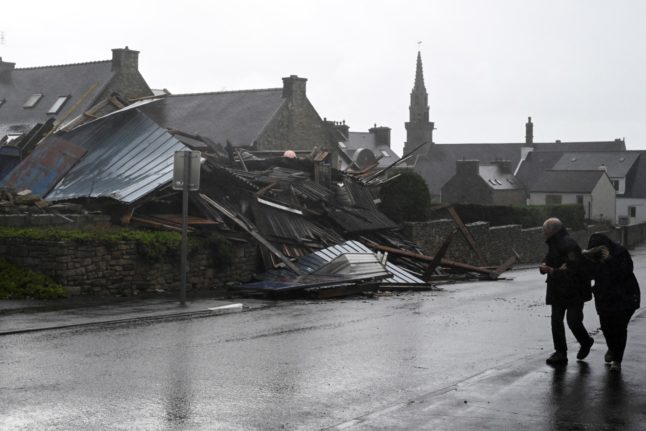The figure released by the Zurich-based group — which combines both insured and uninsured losses — was down from $59 billion (45 billion euros) in the first half of 2013.
It was also about half the average first-half loss of the previous ten years, which was $94 billion.
The insurance industry took a hit of $21 billion from disasters in the January to June period.
That was down from the $25 billion in payouts over the same period in 2013, and also below the $27 billion ten-year average.
The costliest disaster for the insurance sector was the thunderstorms and hail which hit the United States in mid-May, causing $3.2 billion in damage, of which $2.6 billion was insured.
Next came June's storms in France, Germany and Belgium, where losses reached $2.7 billion, with $2.5 billion of that covered by insurers.
February's snowstorm in Japan inflicted $5 billion in economic losses, but only half of that figured was insured.
The January snowstorm in the United States lead to economic losses of $2.5 billion, of which $1.7 billion was insured.
And May's thunderstorms and tornadoes in the United States generated losses of $1.7 billion, with $1.1 billion of that covered.
Rich countries traditionally see the most expensive single disasters in terms of insurance claims, given their wealthier economies and extensive insurance penetration.
Poorer nations generally face a gap between overall economic damage and insurance payouts.
For example, May's heavy flooding in Serbia, Bosnia and Croatia resulted in economic losses of $4.5 billion, but Swiss Re said insured losses were moderate due to low coverage.
Poorer nations also traditionally bear the brunt in terms of lives lost in disasters, which Swiss Re said reached 4,700 in the first six months of the year.
Man-made disasters were to blame for economic losses of $3 billion over the first half, with $2 billion of the sum insured.
In the first six months of 2013, man-made disaster losses had reached $5 billion, above the ten-year average of $4 billion.
INSURANCE
Worldwide damage from natural disasters drops
Natural disasters caused total economic losses of $41 billion in the first six months of this year, much less than usual, reinsurance group Swiss Re estimated on Wednesday.
Published: 27 August 2014 15:51 CEST

Swiss Re headquarters in Zurich. Photo: Swiss Re
Url copied to clipboard!


 Please whitelist us to continue reading.
Please whitelist us to continue reading.
Member comments